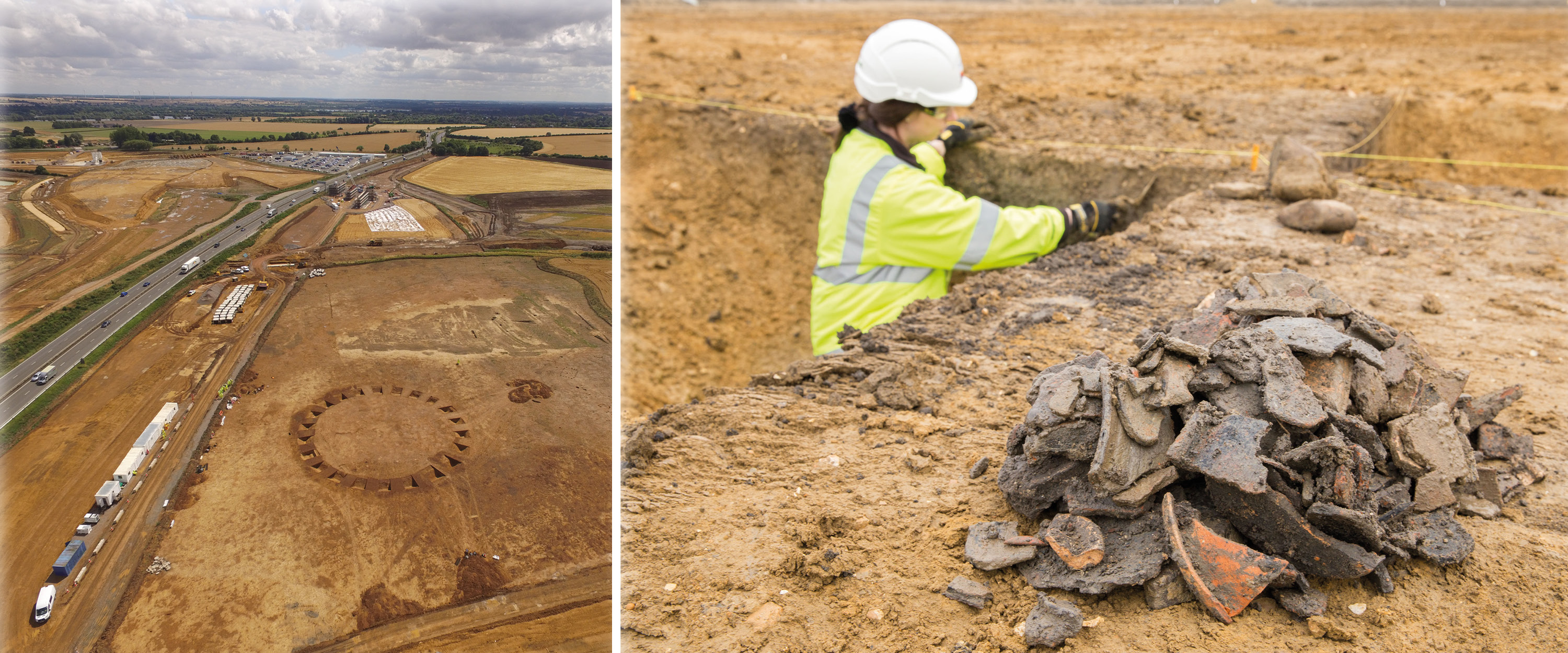A road of discoveries
The A14 Cambridge to Huntingdon improvement scheme is a £1.5 billion roadworks project including a major new bypass and upgrades to 21 miles of the A14. With over 250,000 artefacts found, it is one of the largest and most complex archaeological projects in the UK.
Just before the main work began in November 2016, a team of 250 archaeologists from the UK and Europe were called in to investigate over 40 sites spanning 350 hectares. Archaeological work was initially started with geophysical surveys in 2010 when the roadworks were first being considered. The surveys identified some of the possible findings and created a proposal for excavation areas.
Working together
MOLA Headland archaeologists worked as a joint venture with the Highways England team to ensure the excavations were carried out with minimal disruptions, were executed safely and efficiently. Both teams believed it to be highly important to learn about and preserve thousands of years of history that lay beneath the future roads.
What was found?
Once the team had completed the excavations, the findings included:
- Woolly mammoth tusks and woolly rhino skulls, potentially dating back to over 100,000 years ago
- Three Neolithic henges, between four and five thousand years old, and seven prehistoric burial mounds from the Bronze Age
- 15 Iron Age and Roman settlements, three Anglo-Saxon settlements and one deserted medieval village
- Around 15,000 objects such as coins, brooches and ironwork, over 500 human burials and cremations, more than six tonnes of pottery and almost five tonnes of animal bone
Working safely
With such a big project like this, the A14 Cambridge to Huntingdon improvement scheme wanted to make sure that the work was carried as smoothly as possible to ensure there would be no delays. The archaeologists worked to an extremely high standard and shared the same work ethos as the A14 Integrated Delivery Team.
The A14 Cambridge to Huntingdon improvement scheme is a registered Ultra Site, meaning that they have made a commitment to be a beacon of best practice within the industry, shining a light to how others should be working in the industry.
Portraying their Ultra Site considerate credentials, the A14 team laid trackway matting down to ensure the archaeologists work could be as productive as possible and provide the team with a safe way to move around the site freely. As a large amount of the work took place in winter, the site team conducted warm up exercises each morning so the archaeologists were ready to safely start the day.
Engaging with the community
Not only was the work that was conducted carried out safely, the archaeologists on the A14 site were careful to respect the community. The use of social media ensured regular updates were provided to the interested public.
The team delivered many talks to interested groups, as well as holding regular open days which were organised for the public to come onto site to see the findings of the excavations. Alongside working with the community, the A14 Apprenticeship Scheme ensured trainee apprentices worked on the site with the archaeologists to gain first-hand experience in a different field of work. Other initiatives included school visits, events days with the MHI (MOLA Headland Infrastructure) and a community excavation, where over 70 people came onto site for a week and were trained in the techniques of archaeological excavation.
The future
Now that the main excavations have finished, the team will spend the next three years recording and analysing the 250,000 artefacts found to put together a picture of over 6,000 years of human history and over 130,000 years of animal history to establish what once used to be. The results will be presented in a variety of formats including: traditional academic and popular reports, an online accessible archive and other digital applications.



